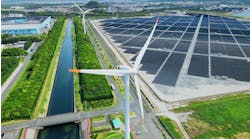Achieving an energy efficient smart building requires skill and moreover commitment. Although technologies and techniques have become more accessible, challenges such as balancing objectives, data management, and garnering stakeholder buy-in remain. However, they can be resolved over time by persistent building managers.
Challenge 1: Keeping occupants comfortable while maintaining efficiency
Building managers must balance saving energy and occupant comfort. A 2022 paper from the Munich University of Applied Sciences found that many facility managers lack real-time information to keep occupants comfortable and to monitor building operations. While managers were interested in energy-saving technologies, they were reluctant to implement changes without knowing how the changes would affect occupants.
The research noted that a building management system (BMS) can provide this necessary information. Owners and managers of high-tech buildings can do the same, using Internet of Things (IoT) sensors to gather information on how energy-efficient technologies affect occupant comfort.
Researchers from the University of Michigan deployed this strategy by using thermal and video cameras to measure body heat by capturing the facial temperatures of occupants with thermal imaging. That data then went into a predictive model that compared measured temperatures to occupants’ preferred temperature, input via a smartphone app . Their Human Embodied Autonomous Thermostat (HEAT) approach can also calculate the temperature that would keep the most people comfortable while maximizing energy efficiency. The research team believes its technology could lead to the end of wall-mounted thermostats.
HEAT is not yet available commercially, but the technology is available for licensing.
Challenge 2: Managing investments in smart building and energy efficiency technologies
Justifying and managing the need for corporate investments in smart building technologies. A May 2022 survey by the global technology group ABB indicated that 97% of industrial businesses in sectors such as manufacturing, energy, and transportation are investing or plan to invest in energy efficiency improvements; 89% expect to increase these investments over the next five years. However, many businesses expressed concerns over this spending; 53% percent of respondents called the expense of energy-efficient technologies a moderate or significant threat to profitability. Similarly, 37% expressed concerns over the downtime required to transition to new systems. Facility managers must be prepared to justify that the technological upgrades are a worthwhile investment on a large scale to C-suite members.
Facility managers must be prepared to justify that the technological upgrades are a worthwhile investment on a large scale to C-suite members.
Despite cost concerns, smart building deployments are expected to rise, according to a March 2022 market analysis by Juniper Research. It anticipates 115 million smart buildings will exist by 2026, compared to 45 million this year. The researchers found improvements to energy efficiency was a driving force behind the forecasted growth of more than 150%. Smart technology proponents could cite studies about the technologies’ impact on sustainability to encourage further investment for future projects and secure new building contracts.
For example, advocates could point to how adaptive lighting controls alone can reduce energy consumption by 40%, with smart HVAC systems achieving savings of up to 45%. Building managers could cite cost-focused research, such as how smart HVAC systems can reduce energy spending by upwards of 25%. The Juniper Research analysis also noted that commercial buildings will comprise 90% of smart technology expenditures by 2026, due to their larger scale—and thus larger ROI—over residential properties. However, as technology improves, similar ROIs will likely apply to residential properties.
Challenge 3: Data deluge from energy management technologies
IoT sensors and smart equipment can provide numerous insights to building operators. Property managers and owners can use sensors in a predictive maintenance strategy to send alerts. Construction site managers can utilize connected sensors to detect issues such as unnecessary equipment idling or dangerous operating behaviors. Similar technology could help facility operators.
But technologies do not always fully work without human intervention. Managers must monitor data collected by IoT sensors and smart equipment and adjust systems accordingly. Cleaning and preparing data are multistep processes. And someone must verify the data, which entails checking energy usage or sensor data on tenants against a second source like utility bills. Collecting information for a smart building is not a “set it and forget it” experience, but the investment should pay off once building managers have reliable information.
Collecting information for a smart building is not a “set it and forget it” experience, but the investment should pay off once building managers have reliable information.
In 2020, researchers from the Swiss Federal Laboratories for Materials Science and Technology announced a self-learning heating system that automatically adjusted the room temperature using building temperature data from the past year and current weather information. It then anticipated the most comfortable temperature for occupants based on real-time weather conditions, saving 25% in energy consumption over the baseline.
For building managers, outsourcing data analytics and practicing good information hygiene to a third-party data analytics or an artificial intelligence provider may be the easiest way forward. Given the high upfront costs of such systems, testing those that can produce a higher ROI first, such as predictive maintenance, can be useful before expanding.
Challenge 4: Teaching occupants to support energy efficiency
Besides keeping people comfortable, smart building energy efficiency also relies on occupants to understand their role in optimizing building operations. A BMS may suggest keeping the indoor environment at a certain temperature, but occupants might still override the system. Increasing efficiency in commercial or public building requires behavioral changes, and not everyone will be interested in complying with eco-friendly practices.
Researchers in a European Union–funded project hypothesized that people wouldn’t change their behaviors until they were more aware of their energy consumption habits. One solution explored was the creation of a hybrid digital-reality game geared toward children and their parents. This gamification and engagement helped communicate the importance of sustainability and made it easier for families to understand and address their specific habits.
At a hospital, behavior-modification programs included specific training on energy efficiency for staff and selecting an “energy champion” for each facility. Building automation systems tracked when people overrode the auto-adjusting HVAC systems and helped share monthly energy data among key employees.
Building managers or owners can subscribe to an interactive and understandable app to help occupants track energy consumption and set goals. These engaging tools will help people understand their personal impact on sustainability.
Even with the latest technologies, smart building technologies face an uphill battle in reducing energy usage. Setting clear goals and processes for decision-makers will help get everyone on board.



